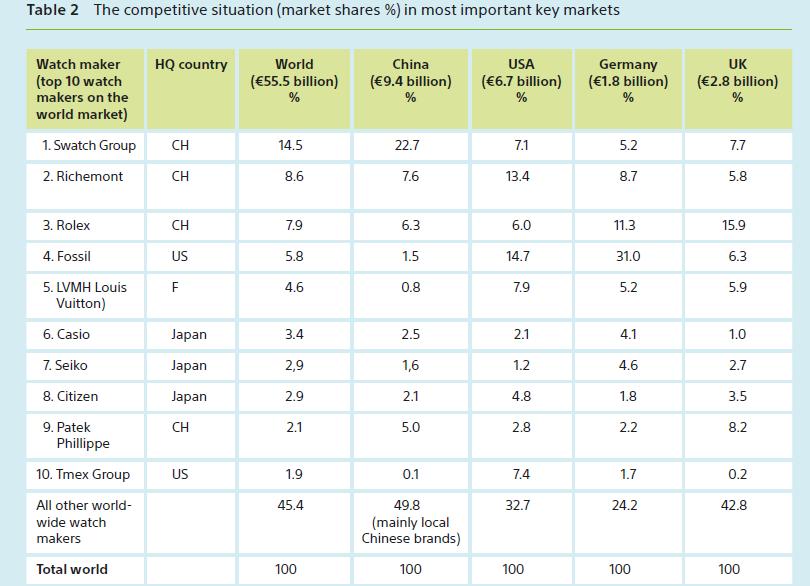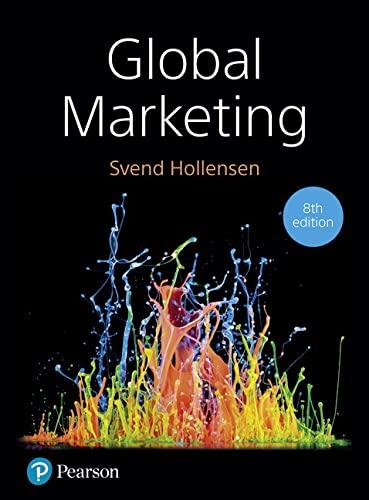Upon the death of his wife in 1944, the founder of Rolex, Hans Wilsdorf established the Hans
Question:
Upon the death of his wife in 1944, the founder of Rolex, Hans Wilsdorf established the Hans Wilsdorf Foundation, a private family trust, in which he left all of his Rolex shares, making sure that some of the company’s income would go to charity. Wilsdorf passed away in 1960, and since then the trust has owned and run Rolex SA Being a private trust, the financial figures of Rolex are secret, but the total turnover of Rolex in 2018 is estimated at approximately €6 billion, with a net profit margin of 30 per cent. The total number of employees in Rolex is around 2,800.
In 2014 Mr. Jean-Frédéric Dufour was appointed as new CEO of Rolex.
History of Rolex
The history of Rolex is linked to its founder Hans Wilsdorf, who took the first steps in the world of Swiss watchmaking as he dreamed about a timepiece that could be worn around the wrist. In 1905, at the age of 24, Hans Wilsdorf founded a company in London specializing in the distribution of timepieces. He began to dream of a watch worn on the wrist. Wristwatches were not very precise at the time, but Hans Wilsdorf foresaw that they could become not only elegant, but also reliable.
In 1910, a Rolex watch was the first wristwatch in the world to receive the Swiss Certificate of Chronometric Precision, granted by the Official Watch Rating Centre in Bienne.
In 1919, Rolex moved to Geneva, a city renowned internationally for watchmaking. The move was also made in order to avoid heavy taxation from a recovering post-war Britain. Montres Rolex S.A. was registered in Geneva in 1920.
The Rolex ‘Oyster’ was introduced in 1926 and it was the first waterproof and dustproof wristwatch. It is one thing to claim a watch is waterproof. It is quite another to prove it. In 1927 a Rolex Oyster crossed the English Channel, worn by a young English swimmer named Mercedes Gleitze. The swim lasted over ten hours and the watch remained in perfect working order at the end of it.
In 1931, Rolex produced and introduced the first self-winding Rolex wristwatch.
The year 1945 saw the birth of the ‘Datejust’, the first self-winding wrist watch to indicate the date in a window on the dial. The ‘Datejust’ was equipped with a Jubilee bracelet created especially for it and a fluted bezel, making it immediately recognizable as a Rolex.
It is the pillar of the Oyster collection.
Sir John Hunt’s expedition, in which Sir Edmund Hillary and Tenzing Norgay reached the summit of Mount Everest in 1953, was equipped with Oyster Perpetuals.
Whereas many of Rolex’s competitors (e.g. the Japanese ones) rely on digital watches, Rolex still focuses on developing the mechanical technology in its watches. Although Rolex has made very few quartz models for its Oyster line, the company’s engineers were instrumental in design and implementation of the technology during the late 1960s and early 1970s.
The global watch market
In 2018 the global watch market was worth €55.5 billion (in retail value), representing a volume sale of 413.9 million units. The distribution of units and retail value among most important countries is shown in Table 1:

The competitive situation in key markets
Table 2 shows the competitive situation in the world market – the world market shares of the Top 10 watch makers – and their position in the single key markets (China, USA, Germany and UK).
 As number 3 on the world ranking list, Rolex achieved a turnover in 2018 of €6 billion. Number 1 on the ranking list, Swatch Group achieved €13 billion (2018) and number 2 on the ranking list, Richemont achieved €9 billion (2018).....
As number 3 on the world ranking list, Rolex achieved a turnover in 2018 of €6 billion. Number 1 on the ranking list, Swatch Group achieved €13 billion (2018) and number 2 on the ranking list, Richemont achieved €9 billion (2018).....
Questions
1. Make a SWOT analysis for Rolex.
2. Which screening criteria would you recommend Rolex to use in its future IMS (international market selection) process?
3. What would be your suggestion for ranking of the four presented markets (China, USA, Germany and UK), regarding use of future Rolex marketing resources?
4. Is the future for Rolex the online or offline business model?
5. Discuss the two strategies and draw a conclusion with respect to Rolex.
Step by Step Answer:






